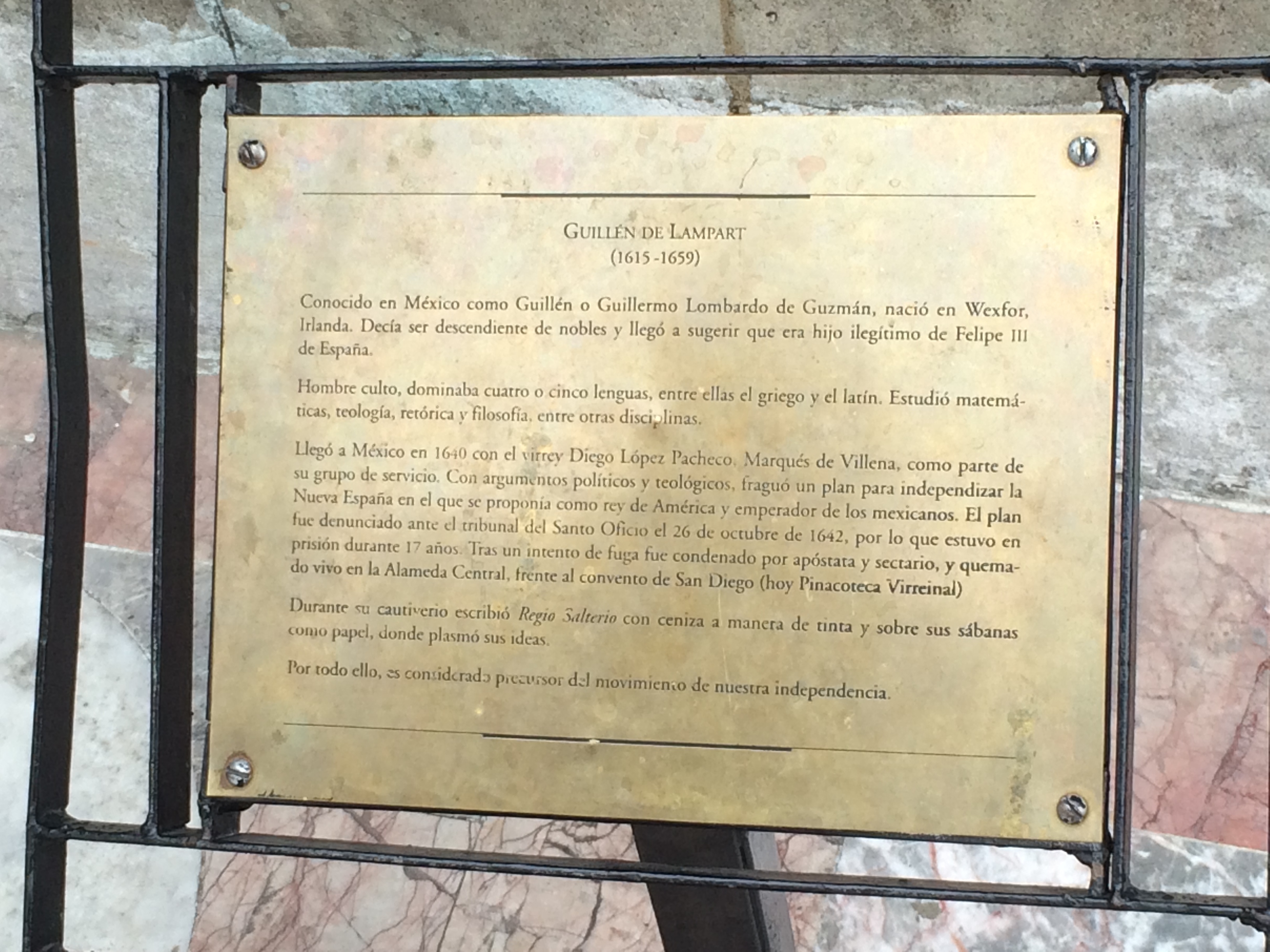Photograph as originally submitted to
this page in the Historical Marker Database
www.HMdb.org.
Click on photo to resize in browser. Scroll down to see metadata.
Photographer: J. Makali Bruton
Taken: October 26, 2015
Caption:
Monument to Mexican Independence Marker | Additional Description: This additional marker reads: Guillén de Lampart (1615-1659), Conocido en México como Guillén o Guillermo Lombardo de Guzmán, nació en Wexfor, Irlanda. Decía ser descendiente de nobles y llegó a sugerir que era hijo ilegítimo de Felipe III de España. Hombre culto, dominaba cuatro o cinco lenguas, entre ellos el griego y el latín. Estudió matemáticas, teología, retórica y filosofía, entre otras disciplinas. Llegó a México en 1640 con el virrey Diego López Pacheco. Marqués de Villena, como parte de su grupo de servicio. Con argumentos políticos y teológicos, fraguó un plan para independizar la Nueva España en el que se proponía como rey de América y emperador de los mexicanos. El plan fue denunciado ante el tribunal del Santo Oficio el 26 de octubre de 1642, por lo que estuvo en prisión durante 17 años. Tras un intento de fuga fue condenado por apóstata y sectario, y quemado vivo en la Alameda Central, frente al convento de San Diego (hoy Pinacoteca Virreinal). Durante su cautiverio escribió
Regio Salterio con ceniza a manera de tinta y sobre sus sábanas como papel, donde plasmó sus ideas. Por todo ello, es considerado precursor del movimiento de nuestra independencia. (English translation: Lampart Guillen (1615-1659), known in Mexico as Guillen Lombardo or Guillermo Guzman, born in Wexfor, Ireland. He claimed to be a descendant of nobles and even suggested that he was an illegitimate son of Philip III of Spain. An educated man, he spoke four or five languages, including Greek and Latin. He studied mathematics, theology, rhetoric and philosophy, among other disciplines. He arrived in Mexico in 1640 with Viceroy Diego Lopez Pacheco, Marqués de Villena, as part of his service group. With political and theological arguments, he hatched a plan to make New Spain (Mexico) independent, in which he intended to be king of the Americas and emperor of Mexico. The plan was reported to the court of the Holy Office on October 26, 1642, and he was put in prison for 17 years. After an escape attempt, he was convicted as an apostate and heretic, and burned alive in the Alameda Central, opposite the convent of San Diego (now Pinacoteca Virreinal). During his captivity he wrote
Regio Salterio with ash as ink and bedsheets as paper where he wrote out his ideas. Therefore, he is considered as the precursor of our independence movement.)
Submitted: October 29, 2015, by J. Makali Bruton of Accra, Ghana.
Database Locator Identification Number: p335793
File Size: 1.525 Megabytes
To see the metadata that may be embedded in this photo, sign in and then return to this page.
